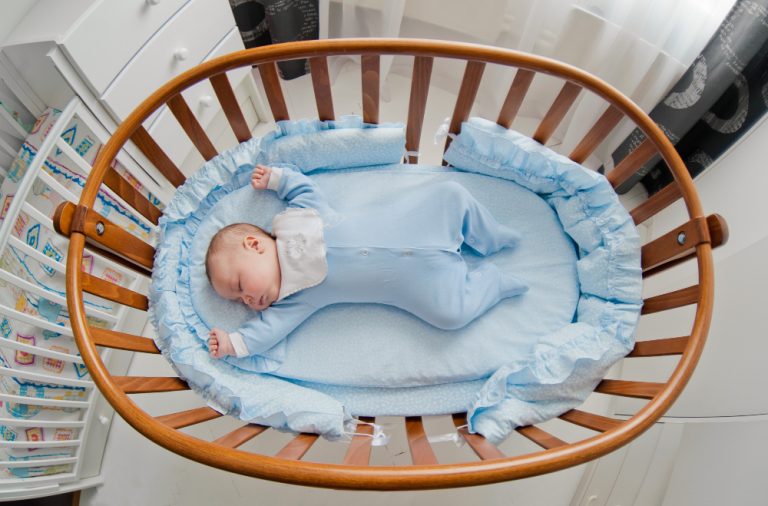When Do Babies Drop To One Nap? Baby’s Nap Transition
Are you a parent who’s noticing signs that your little one is ready to drop a nap, but you’re not sure how to make the transition smoothly? Are you feeling overwhelmed and unsure of when do babies drop to one nap or where to start? We’re here to help you navigate this challenging phase with ease and confidence. So, are you ready to learn how to transition your baby from two naps to one without disrupting their sleep routine? Let’s dive in!
In this insightful guide, we’ll delve into the telltale signs that indicate your baby is ready for the transition, provide you with expert strategies and tips for a seamless switch, and offer advice on maintaining a healthy sleep routine during this crucial period.
Get ready to learn how to make the transition to one nap as smooth as possible, ensuring that both you and your little one can enjoy a well-rested and happy routine.
Smooth Nap Transition: When Do Babies Drop To One Nap?

Transitioning your baby from two naps to one can be a challenging phase for both parents and babies. This guide aims to provide you with valuable tips and strategies to navigate this transition smoothly, helping your little one maintain a healthy sleep routine.
One of the key challenges of this transition is recognizing when your baby is ready for it. It’s important to observe your baby’s behavior, as every child is different. Signs that indicate readiness may include longer wake periods between naps, increased resistance to naps, and consolidated night sleep.
The transition to one nap typically occurs around 14 to 18 months, but it can vary depending on your baby’s unique needs and development. Factors such as sleep regressions and your child’s physical growth may affect the timing of this transition.
During the transition, it’s crucial to establish a consistent sleep routine and provide adequate daytime sleep. There are various strategies you can employ, such as gradually lengthening wake windows, dropping the nap cold turkey, or flip-flopping between two schedules. It’s essential to choose the approach that suits your baby’s needs and temperament.
Remember, each baby is different, and there is no one-size-fits-all solution. The goal is to find a schedule that works best for your baby’s developmental stage and sleep needs. In the following sections, we will explore signs of readiness, strategies for managing this transition, and provide sample schedules for different age ranges.
Let’s dive in and make this transition as smooth as possible for both you and your baby.
When Do Babies Make The Transition To One Nap?

The transition from two naps to one can be a significant milestone for both babies and parents. It’s important to note that every child is unique, and the timing of this transition may vary. However, there are some general guidelines to help you determine when your little one is ready for a single nap.
Most babies are ready to drop down to one nap between 12 to 18 months of age. During this period, their sleep needs gradually change, and they begin to consolidate their daytime sleep. It’s essential to consider your baby’s overall sleep patterns and behavior when determining if they are ready for the transition.
Here are a few signs that indicate your baby may be ready to transition to one nap:
1. Longer Awake Periods
2. Resistance to Naps
3. Consolidated Night Sleep
Factors like your baby’s developmental stage, energy levels, and individual sleep needs can also influence the timing of the transition. It’s essential to consider their unique circumstances and consult their pediatrician or a sleep specialist for guidance.
Remember, every baby is different, and some may make the transition earlier or later than the typical age range. Stay attuned to your baby’s sleep cues and make adjustments to their schedule accordingly to ensure a smooth and successful transition to one nap.
Signs That Your Baby Is Ready To Transition To One Nap
Transitioning from two naps to one nap is a significant milestone in your baby’s sleep routine. It’s important to carefully observe their sleep patterns and behaviors to determine if they’re ready for this transition. Here are some key signs that indicate your baby is ready to move to one nap:
1. Longer awake periods
If you notice that your baby is consistently staying awake for longer stretches between naps, it may be a sign that they are ready to drop a nap. This could indicate that their overall sleep needs are decreasing.
2. Resistance to naps
Is your baby fighting for their second nap of the day? Are they consistently refusing or taking longer to fall asleep for their afternoon nap? This could be a signal that their body is naturally gravitating towards being awake for longer periods.
3. Consolidated night sleep
A baby who is ready for one nap is more likely to sleep longer stretches at night without frequent night awakenings. If your baby is consistently sleeping through the night or waking up less frequently, it may be a good indicator that they are ready for one nap during the day.
4. Reduced nap duration or variability
If your baby’s naps have become consistently shorter or more inconsistent in duration, it could suggest that their sleep needs are shifting to accommodate a single longer nap.
It’s important to remember that every baby is unique, and there is no one-size-fits-all approach to the transition. Pay attention to your baby’s individual sleep patterns and behaviors. If you notice these signs aligning with your baby’s sleep habits, it may be the right time to start the transition.
Stay tuned for the next section, where we’ll discuss effective strategies for managing this transition smoothly.
4 Working Strategies For Managing This Transition

Dropping from two naps to one nap can be a challenging phase for both babies and parents. Fortunately, there are several strategies you can employ to help your baby navigate this transition and maintain a healthy sleep routine. Here are four effective strategies to consider:
1. Lengthen wake windows
As your baby transitions to one nap, their awake periods will naturally become longer. Gradually increasing the time between naps can help ease the transition. Start by lengthening the morning wake window by 15 minutes every few days until you reach the desired one-nap schedule. This gradual adjustment will give your baby’s body time to adapt to the new routine without causing too much disruption.
2. Drop the nap cold turkey
For some babies, a cold turkey approach works best. If your little one is showing clear signs of readiness for one nap, such as consistently resisting the second nap or having a consolidated night’s sleep, you may opt to drop the nap altogether. It’s essential to ensure that your baby is getting enough daytime sleep during the transition by allowing for longer naps and an earlier bedtime.
3. Gradually transition
If you prefer a more gradual change, consider transitioning from two naps to one by gradually reducing the length of the first nap while extending the awake period before the second nap. Start by decreasing the morning nap by 10-15 minutes every few days while gradually pushing the second nap later into the day. Eventually, the two naps will merge into one, forming a new one-nap schedule.
4. Flip-flop between two schedules
As with any significant change, it’s normal for babies to experience fluctuations in their sleep needs during the transition period. One strategy to manage this is to temporarily switch between a two-nap schedule and a one-nap schedule based on your baby’s level of tiredness.
On days when your little one seems extra tired or is struggling to stay awake between naps, allow for two shorter naps. On other days, when your baby seems more rested, stick to the one-nap schedule. This flexible approach can help accommodate your baby’s changing sleep needs during this transition phase.
Remember, every baby is different, so it may take some trial and error to find the strategy that works best for your little one. Be patient and flexible as you navigate this transition and trust your instincts as a parent. With time, your baby will adjust to their new nap schedule, and you can both enjoy the benefits of a well-rested and happy baby.
Sample schedules for different age ranges
Transitioning from two naps to one can be a significant adjustment for both babies and parents. To help you navigate this transition smoothly, here are sample one-nap schedules for a 14-month-old and an 18-month-old. These schedules provide recommended wake times and nap durations to ensure your baby gets the necessary sleep during the day.
14-Month-Old Schedule
- Wake time: 7:00 AM
- Morning nap: 11:30 AM – 1:00 PM
- Afternoon nap: N/A
- Bedtime: 7:30 PM
At 14 months old, your baby may be ready to transition to one nap per day. This schedule maximizes wake time in the morning and includes a longer midday nap to prevent overtiredness.
18-Month-Old Schedule
- Wake time: 6:30 AM
- Morning nap: N/A
- Afternoon nap: 12:30 PM – 2:30 PM
- Bedtime: 7:00 PM
By 18 months old, most babies have transitioned to one nap. This schedule features a midday nap that aligns with the natural circadian rhythm and ensures your baby has enough rest for the remainder of the day.
Remember, every baby is unique, and these schedules serve as a guideline. Adjust them according to your baby’s individual needs and sleep patterns. It’s important to maintain consistency and establish a routine to help your baby adjust to the new nap schedule smoothly.
Whether you choose to follow these sample schedules or create your own, observe your baby’s cues and adapt as needed. The most important thing is to prioritize adequate daytime sleep and ensure your baby is well-rested throughout the transition to one nap per day.
FAQs On When Do Babies Drop To One Nap?
Here are answers to some commonly asked questions around when do babies drop to one nap:
As you navigate the nap transition with your baby, keep in mind that it’s a gradual process and requires patience and observation. Every child is unique, and the transition timeline can vary. Trust your instincts, pay attention to your baby’s behavior, and make adjustments as needed.
Conclusion & Final Tips: When Do Babies Drop To One Nap?
As your baby grows, it will eventually transition from taking two naps a day to one. While this can be a challenging phase for both you and your baby, there are some tips you can follow to ensure a smooth and successful transition. Once you’ve made the switch to a new nap schedule, it’s important to continue implementing these tips. Here are some final tips to help you navigate this change with ease:
1. Maintain a consistent sleep routine
Stick to a regular bedtime and wake-up time to establish a predictable sleep pattern for your baby. Consistency is vital in promoting healthy sleep habits.
2. Adjust wake windows
Be mindful of your baby’s awake periods and adjust them accordingly to prevent overtiredness. As your baby adapts to one nap, you may need to extend their wake windows to accommodate the longer sleep duration.
3. Create a calm sleep environment
Ensure your baby’s sleep environment is conducive to quality rest. Keep the room dark, quiet, and at a comfortable temperature. Consider using white noise to drown out any disturbances.
4. Offer a quiet time alternative
If your child is resistant to napping, provide alternative quiet activities during their previous second nap time. Quiet play, reading, or engaging in calm sensory activities can help them recharge and maintain a consistent routine.
5. Be flexible
Keep in mind that every child is unique, and their sleep needs may vary. Stay flexible during the transition period and adjust the schedule as necessary to meet your baby’s evolving sleep requirements.
Remember, the nap transition can initially be challenging, but with patience and perseverance, your little one will adjust to their new routine. If you have concerns or need additional guidance on when do babies drop to one nap or nap transitions, consult with your pediatrician or a sleep specialist. Trust your instincts and enjoy this exciting milestone in your baby’s development. Happy napping!







